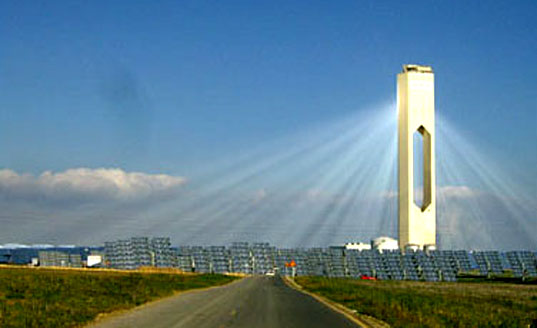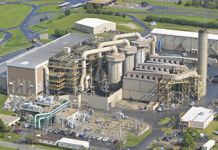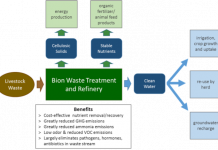The Economist recently had a story on how the cement industry is beginning to confront the fact that the industry produces 5% of the world’s emissions of greenhouse gasses. Carbon dioxide is emitted not only by the fossil fuels used to create the heat used in the creation of cement, and by the chemical reaction in that process.
Unfortunately for us, cement is a remarkably useful building material, not least as a structural material which can also serve as thermal mass in passive solar buildings.
All the large cement firms: Lafarge, Holcim, and Cemex (NYSE:CX) have joined a voluntary emission reduction initiative, the Cement Sustainability Initiative, pledging to reduce their emissions per ton of cement they produce. This is more likely to be effective with industry PR than to actually produce reductions in industry greenhouse gas emissions, even if they meet their goals of per ton emissions reductions, since production continues to grow. (All three are on track to reach their voluntary targets.)
One avenue of CO2 reductions they are pursuing is fuel substitution for their kilns, such as using agricultural waste or used tires. This can lead to opposition due to the concern about more conventional emissions.
 |
|
Cement plant prototype? |
The Economist article was titled "Concrete Proposals Needed." Here’s my proposal: consider more radical fuel-switching, and build new plants in deserts with abundant direct-ray radiation. Then the heat can be provided by the sun, in the form of concentrating solar. I’d almost certainly buy a public cement firm adopting that strategy in a big way. We may need a lot of cement for levees in the not-so-distant future.
DISCLOSURE: none.
DISCLAIMER: The information and trades provided here are for informational purposes only and are not a solicitation to buy or sell any of these securities. Investing involves substantial risk and you should evaluate your own risk levels before you make any investment. Past results are not an indication of future performance. Please take the time to read the full disclaimer here.









Ever heard of Gigacrete?
http://gigacrete.com/
I have not heard of Gigacrete, but I am aware of a large number of much more eco-friendly concrete substitutes for particular applications. The problem is that I don’t know of any with the flexibility of concrete. Note that GigaCrete is only selling products for homebuilding applications… they will likely expand their range over time, but it will be a long wait before they have a prduct suitable to building bridges and levees, not to mention bases for wind turbines.
That’s not to say we shouldn’t adopt more ecofriendly concrete substitutes where we can, but with current technology, construction codes, and concrete’s incumbent status in the industry they can only penetrate a small percentage of the market.
The kiln needs to be at 1500 deg C constantly for 24 hours a day, 50 weeks per year. The idea about the sun is just preposterous and uninformed.
Comments are closed.